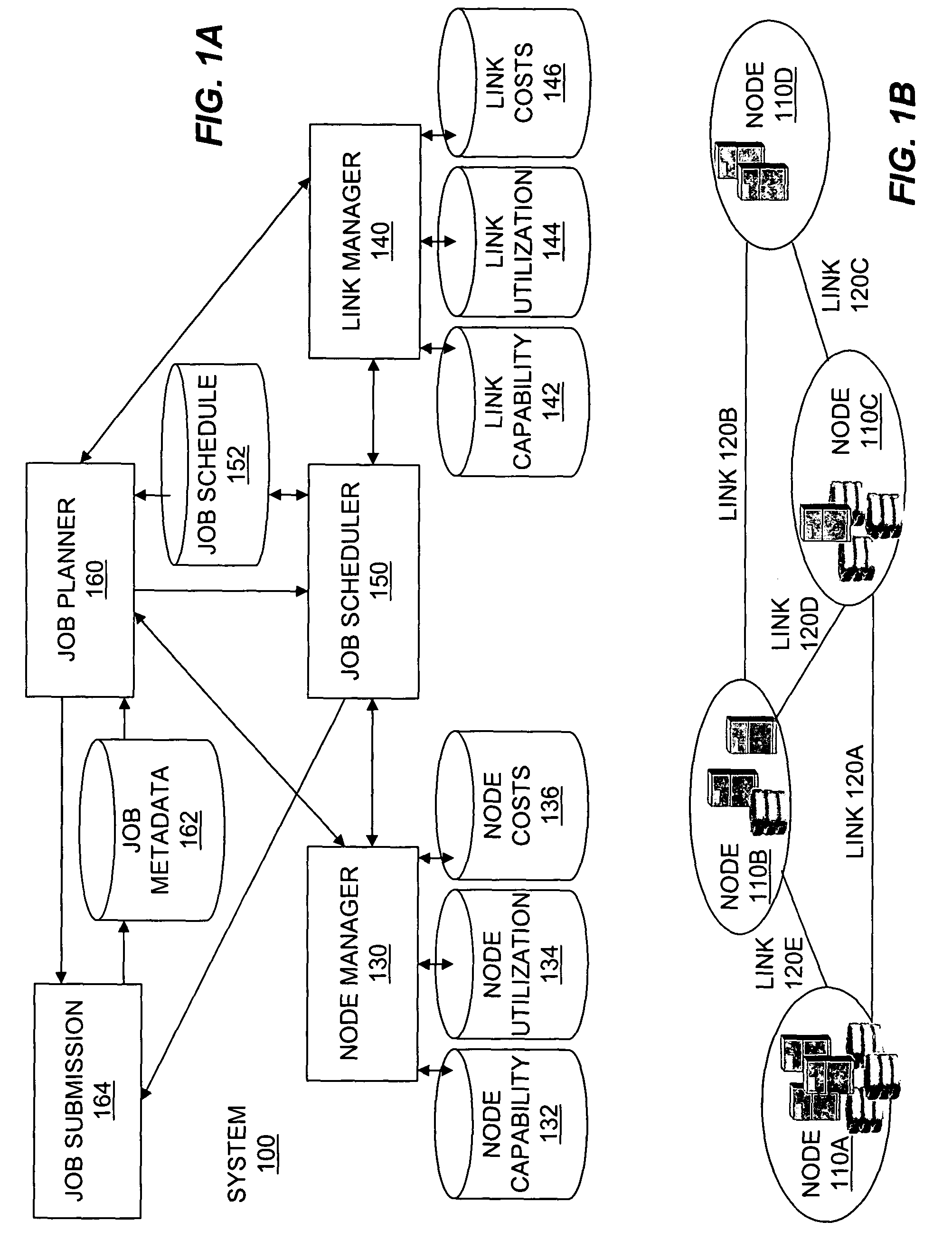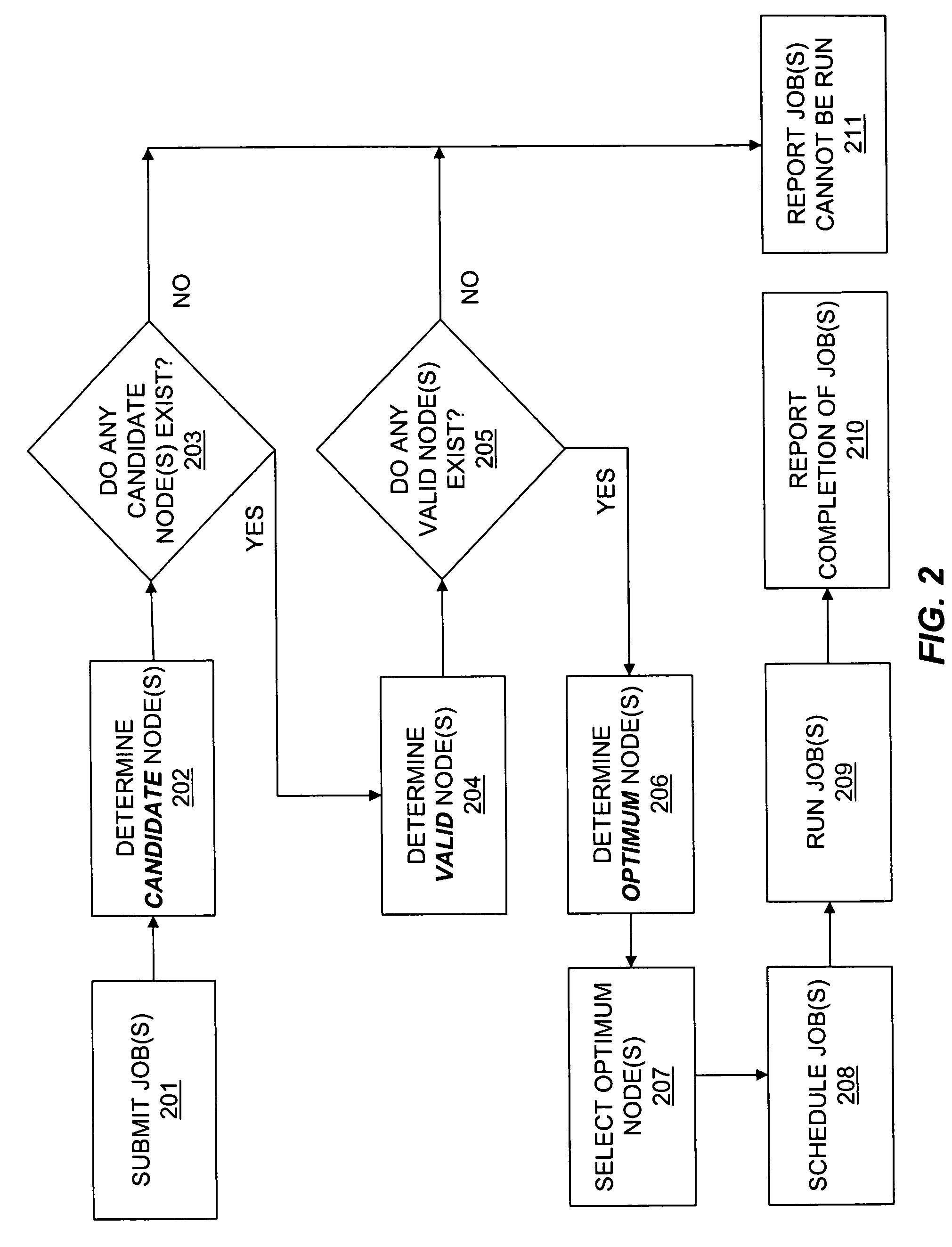Optimized job scheduling and execution in a distributed computing grid
a distributed computing and job scheduling technology, applied in computing, digital computers, instruments, etc., can solve the problems of inability to meet application performance objectives, inability to allocate enough or too much capacity to individual applications, and overpaying for data processing hardware and softwar
- Summary
- Abstract
- Description
- Claims
- Application Information
AI Technical Summary
Benefits of technology
Problems solved by technology
Method used
Image
Examples
Embodiment Construction
[0017]In describing embodiments illustrated in the drawings, specific terminology is employed for the sake of clarity. However, the invention is not intended to be limited to the specific terminology so selected, and it is to be understood that each specific element includes all technical equivalents that operate in a similar manner to accomplish a similar purpose. Various terms that are used in this specification are to be given their broadest reasonable interpretation when used to interpret the claims.
[0018]Moreover, features and procedures whose implementations are well known to those skilled in the art are omitted for brevity. For example, initiation and termination of loops, and the corresponding incrementing and testing of loop variables, may be only briefly mentioned or illustrated, their details being easily surmised by skilled artisans. Thus, the steps involved in methods described herein may be readily implemented by those skilled in the art without undue experimentation.
[...
PUM
 Login to View More
Login to View More Abstract
Description
Claims
Application Information
 Login to View More
Login to View More - R&D
- Intellectual Property
- Life Sciences
- Materials
- Tech Scout
- Unparalleled Data Quality
- Higher Quality Content
- 60% Fewer Hallucinations
Browse by: Latest US Patents, China's latest patents, Technical Efficacy Thesaurus, Application Domain, Technology Topic, Popular Technical Reports.
© 2025 PatSnap. All rights reserved.Legal|Privacy policy|Modern Slavery Act Transparency Statement|Sitemap|About US| Contact US: help@patsnap.com



